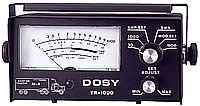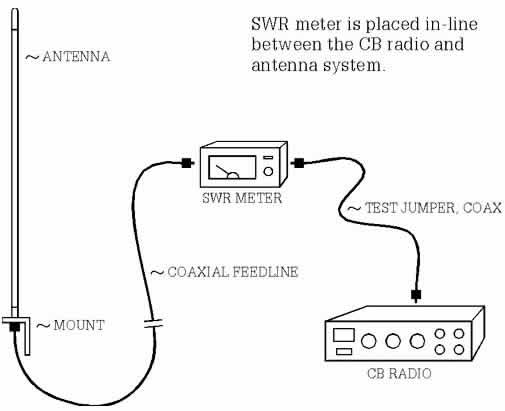All CB antennas are tunable. Antennas that have an easy, often mechanical, tuning device are referred to as a "tunable antenna". Accordingly, many people think the other antennas are not tunable and so they make no attempt to have the antenna tuned. This is a critical mistake.
Wire-wound antennas (without mechanical tuners), that test electrically long (higher SWR on ch 40), can be tuned by removing wire from the top. Remove the antenna cap, remove one wrap of wire and cut it off. Put the cap back on and recheck the SWR again on ch 40 & ch 1. As long as the SWR is higher on channel 40 continue to cut. Do not cut more than one wrap at a time. If SWR testing indicates the antenna is electrically short (higher SWR on ch 1), test for a ground problem. Touch the antenna bracket while keyed and watch for SWR fluctuation. Do not touch or even get close to the antenna. Move the coax around bending it, again watching for SWR fluctuation. If the SWR fluctuates a ground problem exists and must be corrected before proceeding.
If there was no fluctuation bend the end of the wire straight up the fiberglass shaft and lap it over the very top of the fiberglass shaft. Check the SWR on ch 40 & ch 1. The goal is to reverse the situation so that ch 40 has a higher SWR than ch 1. If ch 40 is higher cut 1/8 inch of wire, put the cap back on and check the SWR on ch 40 & ch 1. Continue with this process until ch 40 & ch 1 are relatively the same.
Wire-wound antennas (with mechanical tuners), that test electrically long (higher SWR on ch 40), can be tuned by adjusting the mechanical device at the top of the antenna. Remove the antenna cap, and adjust the rod down or if threaded turn the device clockwise. Put the cap back on and recheck the SWR again on ch 40 & ch 1. As long as the SWR is higher on channel 40 continue to adjust the rod down or if threaded turn the device clockwise. If SWR testing indicates the antenna is electrically short (higher SWR on ch 1), test for a ground problem. Touch the antenna bracket while keyed and watch for SWR fluctuation. Do not touch or even get close to the antenna. Move the coax around bending it, again watching for SWR fluctuation. If the SWR fluctuates a ground problem exists and must be corrected before proceeding.
If there was no fluctuation adjust the rod up or if threaded turn the device counter-clockwise. Check the SWR on ch 40 & ch 1. Continue with this process until ch 40 & ch 1 are relatively the same.
Solid fiberglass antennas (straight or helical wire impregnated in fiberglass resins) that are electrically too long (higher SWR on ch 40) can be cut shorter with a hacksaw or grinder. Cut only 1/4 of on inch at the most at one time. If the SWR test on one of these antennas indicates that it is electrically short (higher SWR on ch 1), the addition of a spring or quick disconnect (or both) is the only way to correct for the short condition.
Base & Center loaded antennas with wire whips have a set screw (or two) just below the area that the whip is inserted into the loading coil. By loosening up the set screw(s) you are able to slide the whip up or down as required. If the SWR is higher on ch 40 slide the whip down, If the SWR is higher on ch 1 raise the whip.
Setting the antenna SWR with an amplifier can get involved. The antenna SWR is calibrated at the back of the amplifier with the amplifier in line and turned off. Once the antenna is properly tuned the meter is removed and re-installed at the radio with the amplifier in line. The antenna SWR level is then measured with the amp off and then with the amplifier switched on. The SWR level must be at an acceptable level at the radio under all conditions. The conditions are with the amp off on channel 40 and 1 and with the amp turned on, on all power levels of the amplifier on channel 1 and 40. Most shops don't check the SWR match at the radio with the amplifier turned on. This is a critical mistake. With these steps added the SWR calibration can turn into a multi hour event at times.






